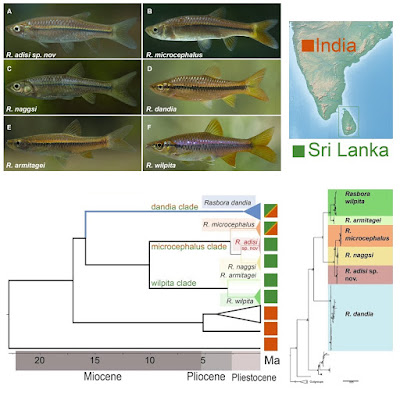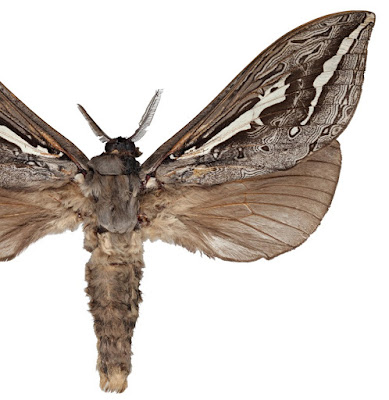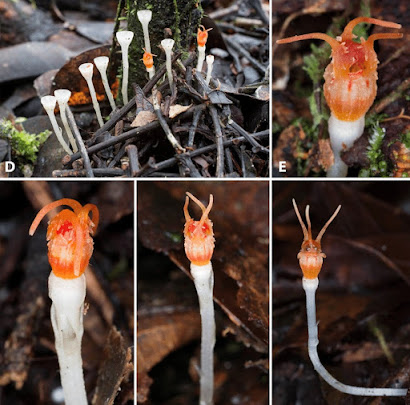[Most Recent Entries] [Calendar View]
Tuesday, August 4th, 2020
| Time | Event | ||||
| 2:26a | [Ichthyology • 2020] Rasbora adisi • A Molecular Phylogeny of the Freshwater‐fish Genus Rasbora (Teleostei: Cyprinidae) in Sri Lanka reveals A Remarkable Diversification—And A Cryptic Species
Abstract The diversity of the freshwater‐fish genus Rasbora (Cyprinidae) on Sri Lanka (five species) is high compared with the four species reported from the peninsula of India, from which the island's cyprinid fauna is derived. The paucity of characters by which species of Rasbora can be phenotypically distinguished renders field identification difficult, adversely affecting the estimation of populations and distributions, with consequences for conservation and management, increasing also the risk of taxonomic inflation. From a sampling of 90 sites across Sri Lanka and based on phylogenetic and haplotype analyses of sequences of cox1 and cytb mitochondrial, and rag1 and irbp nuclear markers, we review the species diversity and phylogeography of Rasbora on the island. Molecular analyses recover, in addition to the five species previously reported, a new (cryptic) species: Rasbora adisi sp. nov. Uncorrected pairwise cox1 genetic distances between species range from 2.0 to 12.3 percent. The Sri Lankan diversification derives from a common ancestor which arrived from India during a sea‐level low‐stand in the mid‐Miocene (15.1 Ma [95% HPD: 11.5–19.8 Ma]), when the present‐day island was subaerially connected to the Indian subcontinent by a broad isthmus. This gave rise to a clade comprising five species—Rasbora adisi sp. nov., Rasbora armitagei, Rasbora microcephalus, Rasbora naggsi and Rasbora wilpita —with a crown age of 9.9 Ma (95% HPD: 7.1–13.3 Ma) and to a clade comprising Indian and Sri Lankan populations of Rasbora dandia, which themselves are reciprocally monophyletic. Morphological analysis of 334 specimens discriminates between most species which, however, are most reliably diagnosed by chromatic characters. The four endemic species exhibit a pattern of inter‐basin dispersal via headwater capture, followed by vicariance, explaining the high diversity of the genus on the island. Keywords: cryptic species, diversification, freshwater fish, India, species delimitation
Rasbora adisi, sp. nov Etymology: The species name adisi, a noun in apposition, means mysterious or enigmatic in Sinhala: an allusion to the cryptic nature of this species. Hiranya Sudasinghe, Rohan Pethiyagoda, Ranasinghe Hettiarachchige,Tharindu Ranasinghe, Rajeev Raghavan, Neelesh Dahanukar and Madhava Meegaskumbura. 2020. A Molecular Phylogeny of the Freshwater‐fish Genus Rasbora (Teleostei: Cyprinidae) in Sri Lanka reveals A Remarkable Diversification—And A Cryptic Species. Journal of Zoological Systematics and Evolutionary Research. DOI: 10.1111/jzs.12395 | ||||
| 3:26a | [Entomology • 2020] Abantiades cephalocorvus & A. tembyi • Two New Australian Species of Abantiades Herrich-Schäffer (Lepidoptera: Hepialidae) and Females of Two further Species with Notes on their Biogeography
Abstract Abantiades cephalocorvus sp. nov. and Abantiades tembyi sp. nov. are described, along with the previously undescribed females of A. macropusinsulariae Simonsen, 2018 and A. pallida Simonsen, 2018. All of these species belong to a triforked Abantiades Herrich-Schäffer clade that is loosely centred around the Nullarbor and other arid regions of Australia. We explore DNA barcodes (mtDNA COI gene) from these and other Abantiades and discuss their significance for species recognition. The species distributions are entirely or largely allopatric and we discuss their origins from a widespread common ancestor that was likely distributed over inland and coastal regions in the mid- to late-Mesozoic before the onset of desertification. Notes on new distributional data for all of the known species in this clade are included. Keywords: Lepidoptera, Australia, COI barcode, morphology, taxonomy, tripectinate Michael D. Moore, Ethan P. Beaver, Alejandro Velasco-Castrillón and Mark I. Stevens. 2020. Description of Two New Australian Species of Abantiades Herrich-Schäffer (Lepidoptera: Hepialidae) and Females of Two further Species with Notes on their Biogeography. Zootaxa. 4822(1); 71–93. DOI: 10.11646/zootaxa.4822.1.3 | ||||
| 4:34a | [Botany • 2020] Thismia minutissima (Thismiaceae) • A Remarkable New Mycoheterotrophic Species from Sarawak, Borneo
Summary Thismia minutissima, a distinctive minute species of the mycoheterotrophic genus Thismia is described and illustrated. It was found in several localities in mountain areas of Sarawak, Malaysia. The new species is superficially similar to members of Thismia sect. Rodwaya from Australia and New Zealand but differs by several distinctive morphological traits, including a fishtail-like lateral connective appendage and a perfect mitre. Its ecology, distribution and taxonomic status, as well as phylogenetic placement, are discussed. Key Words: Burmanniaceae, funiculus, fairy lantern, Malesia, rainforest, seed, taxonomy Thismia minutissima Dančák, Hroneš & Sochor sp. nov. ETYMOLOGY. The specific epithet reflects the flower size which is probably the smallest in the genus. Martin Dančák, Michal Hroneš and Michal Sochor. 2020. Thismia minutissima (Thismiaceae), A Remarkable New Mycoheterotrophic Species from Sarawak, Borneo. Kew Bulletin. 75, 29. DOI: 10.1007/s12225-020-09886-4 |
| << Previous Day |
2020/08/04 [Calendar] |
Next Day >> |









